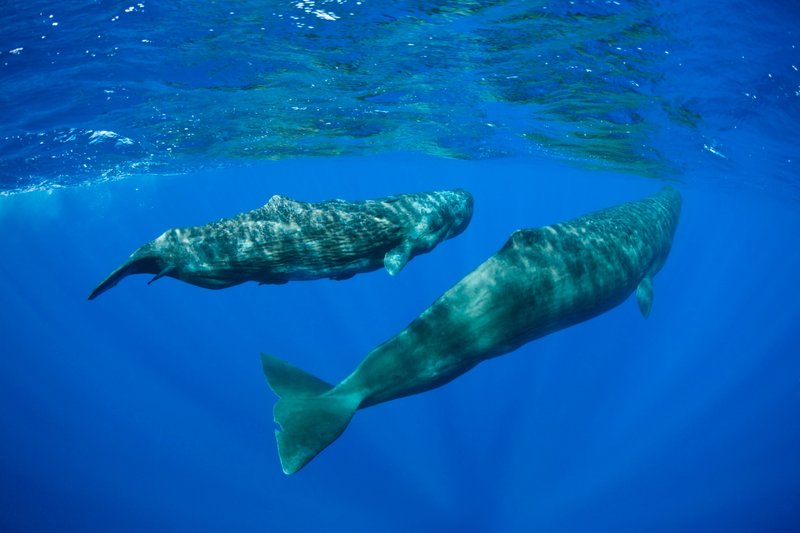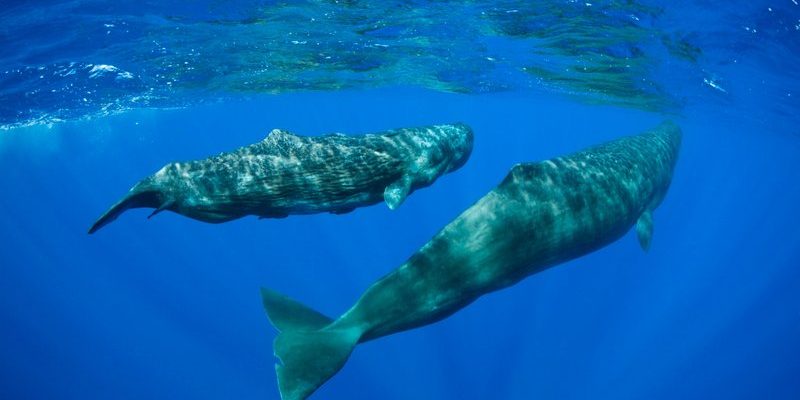
The way these whales interact is not just about survival; it reveals a deep social structure and intelligence that many of us might not associate with marine life. Think of them as the fleet of the ocean, equipped with an incredible set of tools for both finding their way and conversing with their peers. Let me explain how they do it!
How Sperm Whales Navigate
Sperm whales are known for their impressive navigational skills. But how do they find their way in the seemingly endless blue? The secret lies largely in their ability to use sonar. By emitting a series of clicks, these whales can determine the distance to objects, including prey and underwater features. This method is a bit like a bat using echolocation—bouncing sound waves off surfaces to get a mental map of their environment.
Additionally, sperm whales possess an excellent sense of direction, thanks to their large brains. They can detect subtle changes in the water’s pressure and temperature, which helps them understand their surroundings. It’s as if they have an internal GPS system that guides them through the depths. You might be wondering how they memorize these routes. The answer is simple: much like we remember our favorite hiking trails, sperm whales rely on experience and social learning to keep track of their journeys.
Deep Diving and Navigation
One interesting aspect of how sperm whales navigate is their ability to dive to incredible depths—sometimes over 3,000 meters. During these dives, they use a combination of echolocation and their well-developed senses to hunt prey, primarily squid. This ability to dive deep and navigate through darkness means they often travel through diverse underwater landscapes, from rocky formations to open water.
These deep dives can last up to 90 minutes, which is astounding when you consider their size. Imagine holding your breath while swimming through a dark cave—these whales do it with grace and precision. Their capacity to stay submerged for so long and find their way back to the surface speaks volumes about their navigation skills.
How Sperm Whales Communicate
Communication plays a crucial role in the life of a sperm whale. Their sophisticated use of sound is a primary means of interacting with each other. They communicate through a variety of clicks, whistles, and even body language. You could say they have their own language, rich with nuances and meanings.
These sounds serve multiple purposes, from helping them locate one another to coordinating hunts. For instance, when a group of sperm whales is hunting, they can use specific clicks to signal the presence of prey or to inform others about their location. It’s almost like a team of athletes calling plays during a game!
The Role of Dialects
Interestingly, different groups of sperm whales have been found to possess distinct dialects. Just like regional accents in human language, these dialects vary based on where the whales are from. For example, a pod in the Caribbean might use different calls compared to those living near the Azores. This variation is essential for maintaining social bonds within pods and helps whale families recognize each other.
Scientists believe that these dialects are influenced by the social structure of each pod, which can range from small groups to larger, more complex associations. The ability to communicate uniquely not only strengthens ties within pods but also enhances their survival as they share information about feeding spots or potential dangers.
The Importance of Social Structure
Understanding how sperm whales navigate and communicate highlights their intricate social networks. These animals are incredibly intelligent and form tight-knit family groups, which can include mothers, calves, and other relatives. The social structure of sperm whales is key to their survival, as they rely on each other for hunting and protection.
Within these pods, older whales often take on a leadership role, guiding younger members through their dives. This mentorship is crucial. Think of it as a family teaching a child to ride a bike—experience is shared, mistakes are learned from, and skills are honed.
The Impact of Social Learning
The concept of social learning is vital in understanding how sperm whales navigate and communicate. Young whales learn critical skills by observing their elders. This can include techniques for hunting or even how to use echolocation effectively. It’s a powerful example of how knowledge is passed down, ensuring the survival of the next generation.
In this way, the life of a sperm whale is not just about surviving in the ocean; it’s about thriving within a community. Their ability to communicate effectively means they can adapt to challenges, whether it’s finding food or avoiding predators.
Challenges and Conservation
Despite their incredible abilities, sperm whales face significant challenges. Climate change, pollution, and ship strikes threaten their habitats and health. As ocean temperatures rise, their prey may become scarce or migrate to different areas, which can disrupt their hunting patterns.
Conservation efforts are more important than ever. By protecting their natural habitats and reducing human impact, we can help ensure that these magnificent creatures continue to navigate the oceans and communicate as they have for centuries.
How You Can Help
You might wonder how you can make a difference. Supporting ocean conservation organizations, participating in beach clean-ups, or even reducing plastic usage can have a positive impact. Every little action counts, and raising awareness about the challenges sperm whales face can inspire others to get involved.
In summary, sperm whales are not just giants of the ocean—they are intelligent navigators and communicators, using unique sounds to interact and thrive in their underwater world. Their ability to dive deep, find their way, and connect with each other reflects a complex social structure that is fascinating to study and understand.
Protecting these whales and their environment is crucial for the health of our oceans and the rich tapestry of life within them. So, next time you hear about sperm whales or think about the wonders of the ocean, remember the intricate ways these incredible creatures navigate and communicate. They truly are the giants of the deep!

